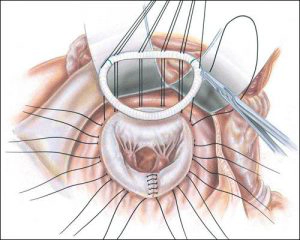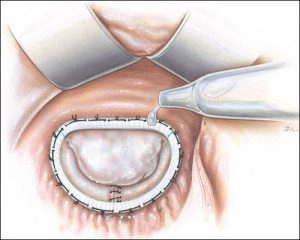Heart Valve Surgery
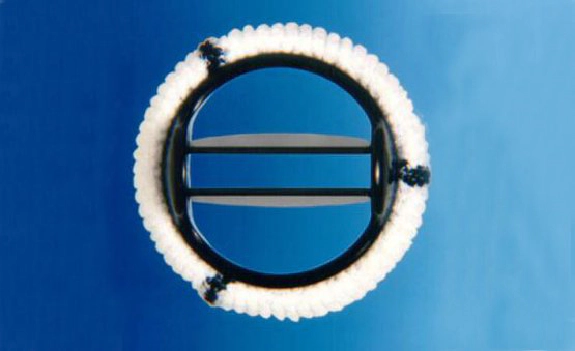
Treatment spectrum - Heart valve surgery in adults
- Mitral and aortic valve replacement with biological and mechanical valves
- Minimally invasive aortic valve replacement
- Aortic valve replacement with homograft in endocarditis
- Minimally invasive mitral valve replacement or reconstruction
- David procedure - valve reconstruction with aortic valve preservation
- Ross procedure using a patient’s pulmonary valve in the aortic position
- Tricuspid valve replacement or reconstruction
Selection of heart valve prostheses
The choice of heart valve prostheses is made together with the patient, taking into account the individual life situation (age, sports activities, comorbidities, etc.).
Mechanical heart valve prostheses
The modern double-flap heart valves (Image 1) offer an ideal flow profile characterized by lifetime durability. As a disadvantage, lifetime treatment with Marcumar to avoid thrombus formation has to be considered.

Biological heart valve prosthesis
Regarding durability, tissue valves (Image 2) cannot be compared to mechanical valves, so in 10-20 years they should be replaced due to degeneration. The advantage of these valves is the low rate of thrombus formation, which is why treatment with Marcumar is only necessary for 3 months after surgery.

Heart valve reconstructions
Ross Procedure
The so-called " Ross procedure " is a variation of replacing a heart valve in an aortic position with a biological prosthesis. The patient’s pulmonary valve is placed in an aortic position, and the pulmonary valve is replaced by a pulmonary donor valve (homograft) (image 3). This option is generally utilized in younger patients who would like to avoid taking Marcumar. Even in this case, however, it must be taken into account that a new operation will be performed to replace the valve, but the durability of the “new” aortic valve is greater than that of conventional biological prostheses.
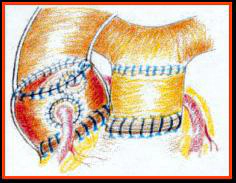
David procedure - Reconstruction of aortic valve
The morphologically intact aortic valve is reimplanted in the prosthesis, replacing the aortic root. The water test confirms the effective blockage of the reconstructed valve.
The development of new surgical techniques improves surgical outcomes to improve the patient’s postoperative quality of life. New implants (so-called hybrid prostheses), in which a thoracic aortic bypass is connected to the conventional vascular prosthesis, replace the ascending aorta, the aortic arch, and the descending aorta. In this way, additional surgery can be avoided in many patients.
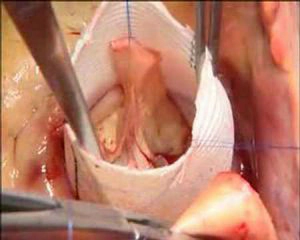
Reconstruction of mitral valve
For some years now, the focus of mitral valve surgery has been on the successful reconstruction of the mitral valve, whereas in previous decades, mitral valve replacement, which is increasingly rarely performed, constituted the bulk of mitral valve surgery. The advantages of mitral valve replacement have to do with the preservation of left ventricular geometry with better functional results and the low tendency of the reconstructed valve to form thrombi, which makes long-term Marcumar unnecessary.
Tricuspid valve
The tricuspid valve diseases are met frequently in combination with diseases of the left cardiac ventricle. In 25 percent of the patients, who undergo reconstruction of the mitral valve because of ischemic insufficiency, the reconstruction of the tricuspid valve is also needed.
The tricuspid valve insufficiency develops as a progressive, continuous condition.
The related clinical semiology appears when the ring (annulus) of the tricuspid valve is dilated quite a lot.
The grade of severity of tricuspid valve insufficiency is related to the patients’ survival. So, high-grade insufficiency is combined with high mortality, no matter the left ventricle’s functional performance and the pulmonary artery’s pressure. For reconstructing the tricuspid valve, we use special rings (Edwards MC3) sutured on the natural ring (annulus) of the valve mentioned above.

